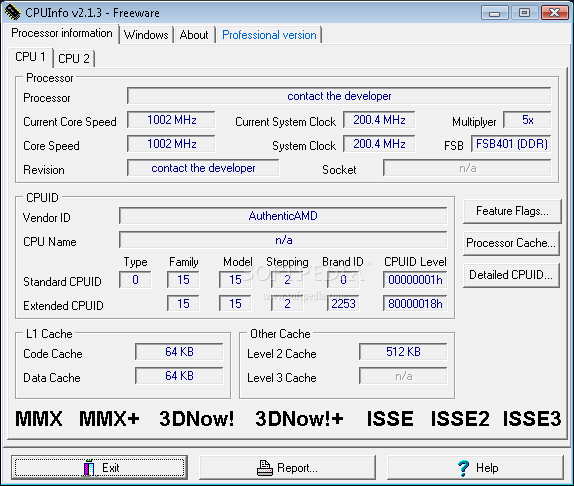

I hope these Linux processor and memory commands have been helpful. If 'filename' is passed, then the file with that name is parsed. Without any argument, parses '/proc/cpuinfo'. METHODS 'new' or 'new ('filename')' Returns a new Linux::Proc::Cpuinfo object. Summary: Linux processor and memory commands It provides a generic interface to access '/proc/cpuinfo'.
#Perl cpuinfo install
When I issue the Linux memory information command, I see the following output:Īs you can see, my current Linux system has 2 GB RAM, with all the additional memory information shown there. To install Linux::Proc::Cpuinfo, copy and paste the appropriate command in to your terminal. Model name : Intel(R) Pentium(R) 4 CPU 3.00GHzįlags : fpu vme de pse tsc msr pae mce cx8 apic mtrr pge mca cmov pat pse36 clflush dts acpi mmx fxsr sse sse2 ss ht tm pbe constant_tsc pni monitor ds_cpl cid xtprįrom that output I can see my current system is a two-processor Intel system, with additional information about the Intel CPU (CPUs, actually). When I issue that Linux processor information command on my current hardware system, I see this output: (See below for sample output.) Linux processor command output To see your Linux memory information and memory stats use this command: A 64-bit processor will have lm (long mode) in the flags section of cpuinfo.


#Perl cpuinfo how to
Its portable between operating systems, though youll need to use manufacturer-specific information to determine how to find the number of cores. (See below for sample processor output.) How to show Linux memory information grep physical id /proc/cpuinfo sort uniq wc -l. If you have assembly-language access, you can use the CPUID instruction to get all sorts of information about the CPU. INSTALLATION To install this module type the following: perl Makefile.PL make make test make install DEPENDENCIES There are no other modules needed. This module provides an object oriented interface to that information for relatively simple use in Perl programs. If due to data dependencies and stalls, not all the ALUs can be kept busy by one thread, those ALUs will instead be used for simultaneous execution of the second hardware thread. To see what type of processor/CPU your computer system has, use this Linux command:Īs you can see, all you have to do is use the Linux cat command on this special /proc/cpuinfo file on your Linux system. CPUs with hyperthreading generally have multiple ALUs and can dispatch multiple instructions per cycle. Linux FAQ: How can I find Linux processor and memory information? (Also written as, How can I find Linux CPU information?, How can I find Linux RAM information?) How to show the Linux CPU/processor Object Oriented Interface to /proc/cpuinfo JSTOWE Please allow a few days until the entry will appear in the published module list.


 0 kommentar(er)
0 kommentar(er)
